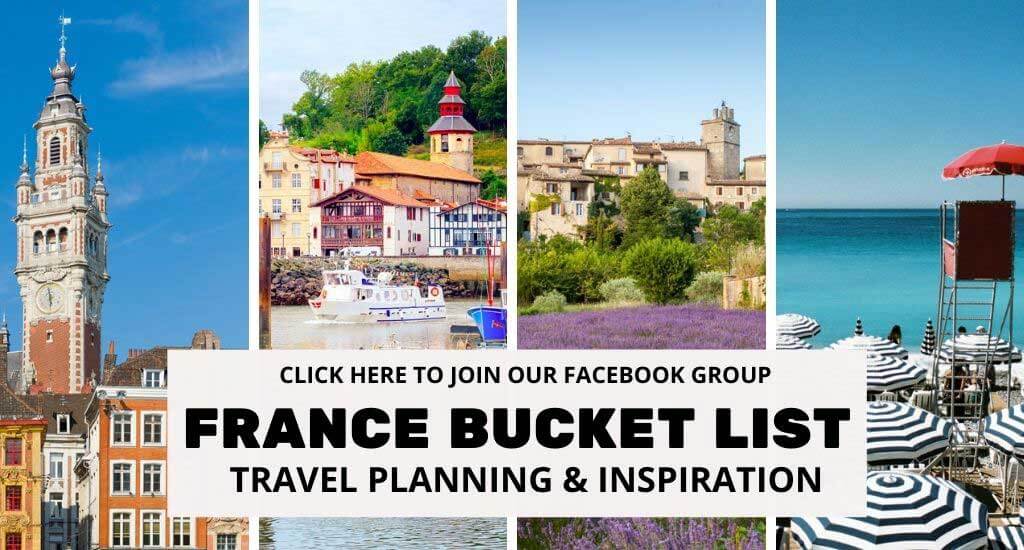Article written by Elisa - Travel Writer & Local in France
This article may contain compensated links. Please read disclaimer for more info.
Route du Mimosa (D559) – France’s Most Beautiful Winter Road Trip
23/01/2024Winter Sunshine along the Mimosa Route, Southern France
If you are looking for a winter break in France combining mild temperatures with extraordinary scenery, La Route du Mimosa, South of France, could be just what you are looking for. From late January to March, the bright yellow of this scented plant grows prolifically in the Var region, where Provence and the French Riviera meet. A symbol of the winter sunshine in Southern France, the yellow mimosa is a sure sign that spring is on its way.
The Mimosa Route (D559 road), is a 130km road that runs from Bormes-les-Mimosas to the perfume capital Grasse and is the perfect destination for a weekend getaway in Southern France in wintertime. The drive takes less than three hours, but we are on holiday, and we want to have fun, so why rush when there are so many beautiful towns to see on the way?
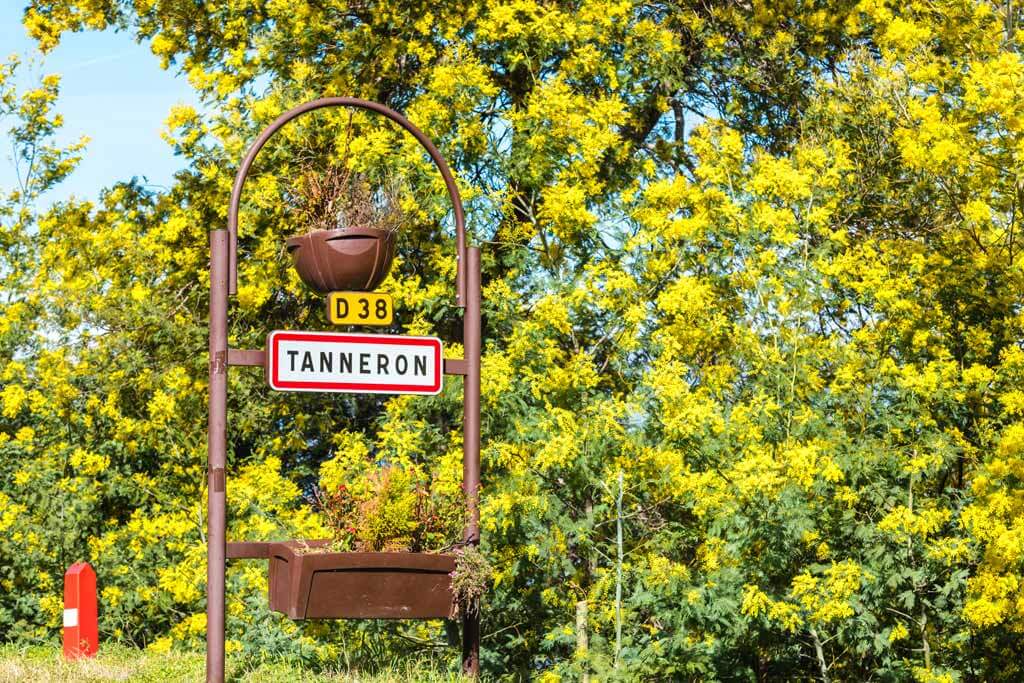
The best way to explore the Mimosa Route is by car. This 6-day Route du Mimosa road trip from Bormes-les-Mimosas to Grasse (or vice-versa) explores the most beautiful towns and landscapes along this route, and it will allow you a few days of winter sunshine, enjoying beautiful places, local festivals, and a slower path of life. Read on for the description of this Route du Mimosa road trip itinerary which comes with a map with all the stops.
La Route du Mimosa, D559 France, is one of the best road trips in France. Read more about road-tripping in France:
Route du Mimosa Road Trip Overview
- Start: Bormes-les-Mimosas
- Finish: Grasse
- Duration: 6 days
- Suggested route: Bormes-les-Mimosas – Saint-Raphaël – Mandelieu-la-Napoule – Pégomas – Grasse
- Total distance: 130 Km, 2 hours drive in total
- Region covered: Provence-Alpes-Côte d’Azur
- Best for: winter sunshine, flower power, perfumes, local life.
Bormes-les-Mimoses is located 17 km from Toulon-Hyeres Airport (TLN), offering seasonal flights to Frankfurt, London-Gatwick, Geneva, Brussels, Rotterdam, and Luxembourg. If you fly to Charles de Gaulle Airport (CDG), you can take a TGV train from Charles de Gaulle Airport to Marseille, and pick up your rental car in Marseille. The train ride from Paris CDG Airport to Marseille takes 3.5 hours, and then it’s one hour to drive from Marseille to Bornes-les-Mimosas
Click here to rent your car in Marseille
If this is your first road trip to France, check out our tips for renting a car in France.

Road Trip Route du Mimosa France Map
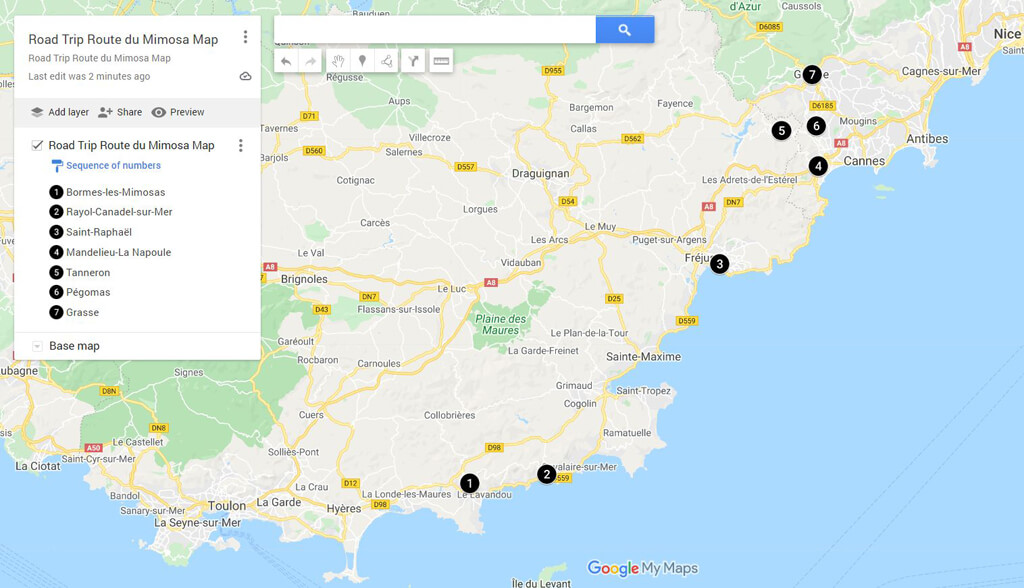
Click here to see this Road Trip Route du Mimosa Map on Google
All about the Mimosa in South of France
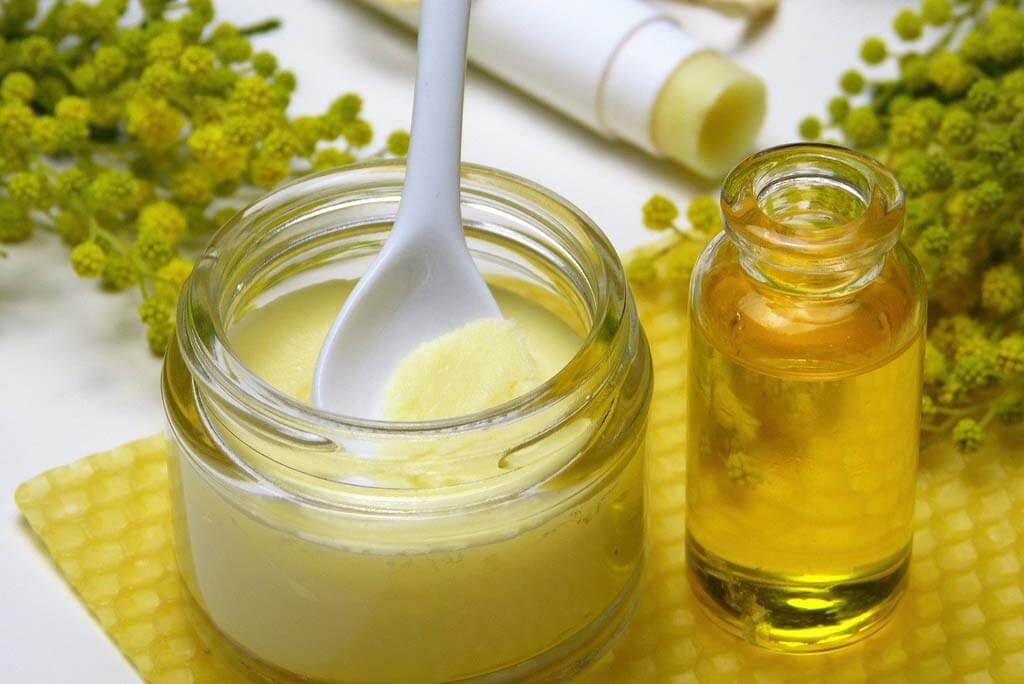
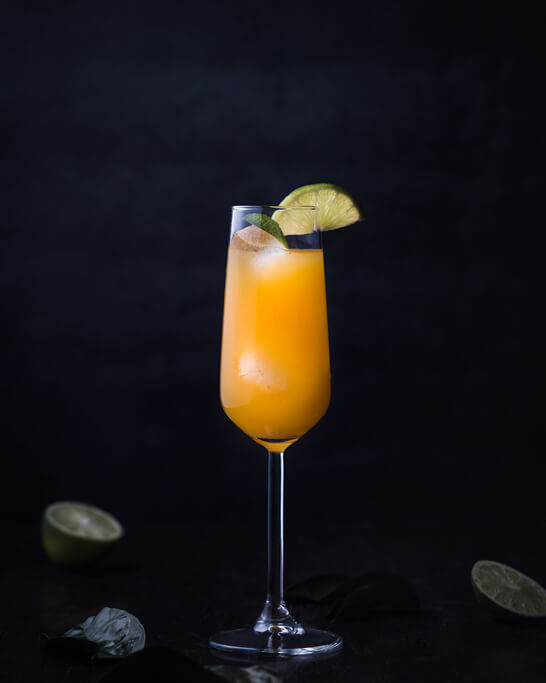
The yellow gold of the Côte d’Azur was introduced from Australia at the end of the 19th century by British aristocrats, who liked to enjoy the mild winters of the French Riviera. The climate in this part of Southern France was perfect for those first mimosas, and they spread around, creating the largest mimosa forest in Europe in the Massif de Tanneron.
The Horticulture and Acclimatization Society greatly contributed to its promotion, and mimosa farmers multiplied in the region in Mandelieu, Pégomas, Tanneron, and La Roquette. From the train stations in Cannes and Mandelieu, the mimosa was sent to all the big cities in France and Europe.
The mimosa in France owes its marketing to the “‘forcing” technique. This process is performed in a closed room, maintaining a temperature of 25°C and a hydrometry of 85. It allows the blossoming of the flower and its conservation thanks to the addition of a special powder called “crystal.”
Today, mimosa is used in the perfume industry and also in gastronomy – syrups, chocolates, candies, and pastries, without forgetting the mimosa French cocktail. Every winter, mimosas attract thousands of visitors in Southern France, and there are many mimosa festivals and related activities through the Route du Mimosa.
WHEN IS THE MIMOSA SEASON IN FRANCE? The mimosa season in France goes from late January to March.
6-Day Road Trip Mimosa Route – Itinerary and Tips
La Route du Mimosa, South of France, is a good destination all year round, but you will see it at its best from mid-January to March. This Mimosa Route itinerary is a mix of seasonal activities (from January to March, when the mimosa blooms) and things to do all year round.
Day 0 | Arrival
Arrive at Bormes-les-Mimosas the day before the start of this road trip in southern France. For your stay in Bormes-les-Mimosas, book two nights at Hostellerie du Cigalou, a lovely hideaway in the center of the village, with free parking nearby. The hotel has retained its old charm, and it offers bright and spacious rooms, a terrace with a pool surrounded by mimosas, and an on-site restaurant – Click here to book your stay at Hostellerie du Cigalou-Les Collectionneurs
Day 1 | Bormes-les-Mimosas
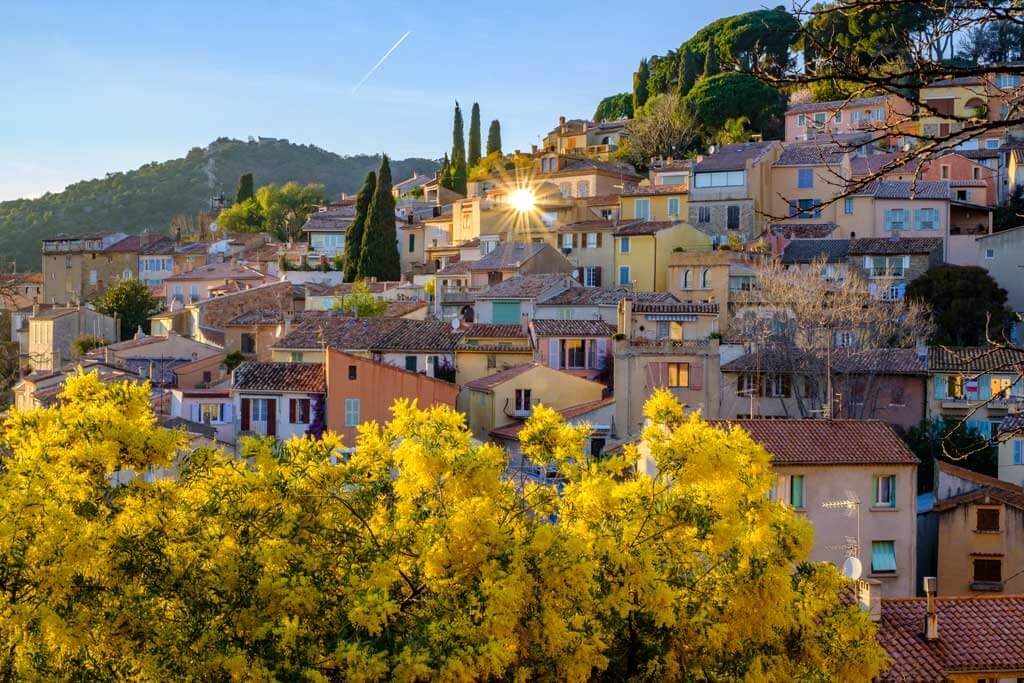
The Route du Mimosa, D559 road France, starts in Bormes-les-Mimosas, a beautiful 12th-century Medieval village nestled between the sea and the forest. Bormes is one of the most beautiful towns in Provence, a little paradise well known for its pretty architecture, lush vegetation, and (of course) the mimosas, which bloom from mid-January to March for the pleasure of locals and visitors.
In Bormes, it is a pleasure to get lost in the narrow streets of the Medieval village, with its cuberts (small covered passages characteristic of Bormes-les-Mimosas) and its pretty Provençal squares with the scent of pines and mimosas. If you love plants and flowers, don’t miss the Parc Gonzalez Jardin Austral botanical garden, with more than 500 species from Australia and a beautiful collection of mimosas.
The list of best things to do in Bormes-les-Mimosas includes:
- Explore the Medieval village
- Parc Gonzalez Jardin Austral (paying)
- Fort de Brégançon, the President of France’s summer residence (open to visitors from 1 to 12 July and from 26 August to 4 October)
- Visit its typical Provencal market (Wednesdays from 8 am to 1 pm, at Place Saint François)
- Go to the beach (Plage de la Favière, Plage de Cabasson, Plage du Fort de Bregancon)
- Hiking (the town is crossed by the famous Grandes Randonnées hikes GR90 and GR51)
- Cigalou Park
- Wine tasting in the surrounding vineyards (Côtes de Provence wines)
Mimosas at Bormes-les-Mimosas
Don’t miss the town’s Mimosas Festival, every year on the last weekend of February. Its flower parade requires no less than 12 tons of mimosas and 80,000 flowers!
Taste the various sweets or pastries based on the mimosa – special mention for the mimosette, a pastry cream brioche decorated with mimosa grains.
Visit Savonnerie des Bormes (211, Rue Carnot and 10, Venelle des Amoureux), which manufactures soaps and cosmetic products with Provençal scents of mimosa, rosemary, or even lavender.
Day 2 | Bormes-les-Mimosas – Saint-Raphaël
Morning in Rayol-Canadel-sur-Mer
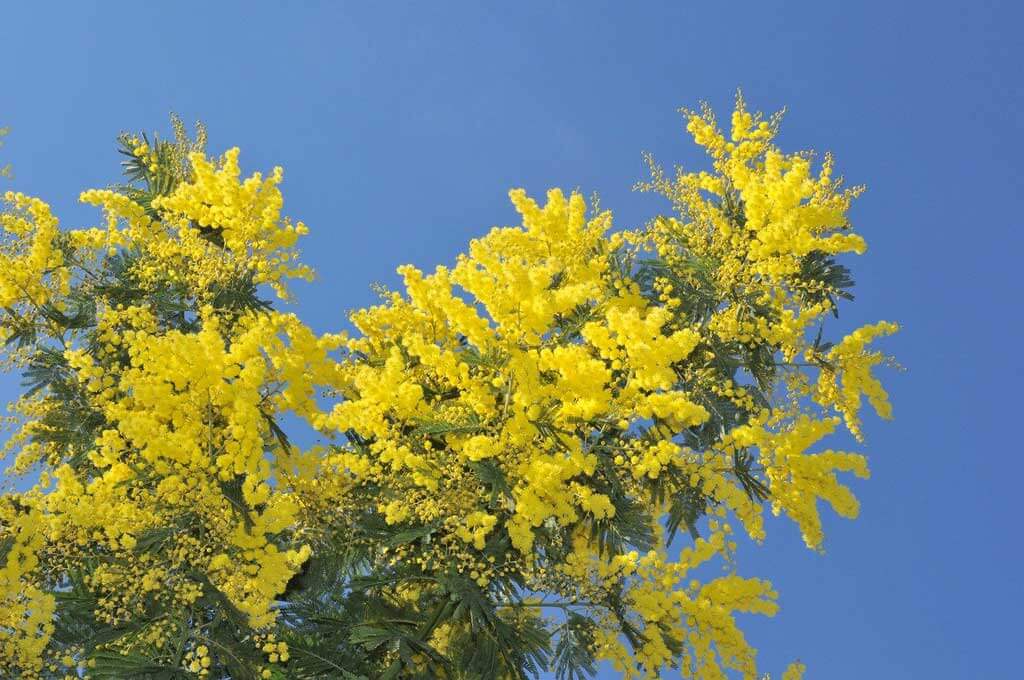
After a good breakfast in the hotel, take the road D559 to Rayol-Canadel-sur-Mer. This charming seaside village, home to beautiful Mediterranean villas, is 80% wooded and built on terraces and multiple staircases.
Here, visit the beautiful 20-hectare Domaine du Rayol, listed as “Jardin Remarquable” and “Grand Site de France.” Designed by the botanist and landscape designer Gilles Clément, the Domaine du Rayol is an invitation to travel through the Mediterranean landscapes of the world (California, Chile, South Africa, Australia, the Mediterranean Basin, the Canary Islands). It also has other landscapes with a drier or sub-tropical climate.
Enjoy a multi-sensory experience as you wander through the gardens, past arbutus, heather, laurel, and eucalyptus, and flowers in a multitude of colors. Have lunch at Café des Jardiniers (on the terrace, inside the domain), offering seasonal cuisine made from local, quality products.
After the visit, take the staircase from the center of the village down to the sea and enjoy spectacular views over the mimosa forests.
Lazy Afternoon in Saint-Raphaël
When you are ready to go, drive to Saint-Raphaël, where you will spend two nights. For your stay in Saint-Raphaël, book at Les Roches Rouges. This stylish modernist hotel built in the 50s is an 8-minute drive from the Saint Raphaël town center, and it offers beautiful rooms with a private balcony, a Mediterranean garden, a restaurant on-site, and direct access to the beach.
Enjoy the last hours of sunshine on the terrace. On one side, the Mediterranean gardens are planted with tamarisk, rosemary, mimosas, fig trees, and thyme… On the other, an endless swimming pool, an XXL natural seawater pool, and the Mediterranean at your feet – Click here to book your stay at Les Roches Rouges
Day 3 | Saint-Raphaël
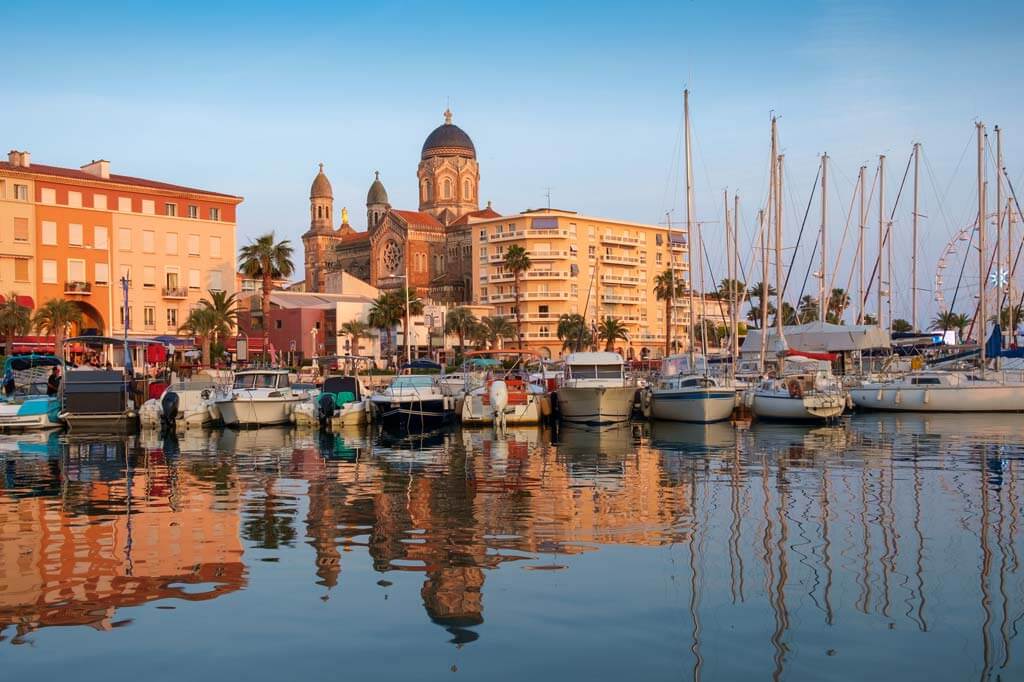
Day 3 of this road trip, Route du Mimosa in France, explores the town of Saint-Raphaël, a seaside resort with the Massif de l’Esterel in the background. A very popular town with artists, athletes, and politicians, Saint-Raphaël is the perfect place to spend a couple of relaxing days (and there’s a bit of sightseeing, too).
The list of best things to do in Saint-Raphaël includes:
- Musée de Préhistoire et d’Archéologie Sous-Marine
- Old Port
- Basilique Notre-Dame de la Victoire
- Chapelle Saint-François de Paule
- San Rafeu Church and Tower
- Musée Louis de Funès
- The beautiful villas from the Belle Époque
- The Markets of Saint Raphaël: food and fish market (every day), market fair (Monday, Wednesday and Thursday), and flea market (Friday)
- Beach, sunbathing
- Hiking in the Massif de l’Esterel
- Boat tour (with or without a skipper)
Mimosas at Saint-Raphaël
In Saint-Raphaël, the reddish-colored volcanic rock contrasts stunningly with the yellow of the mimosa, a sight you will cherish if you decide to walk or hike in this area in the right season.
Didier Carrie, a famous chocolate maker in the area, has created a unique recipe called the Mimosa d’Agay – a white truffle chocolate flavored with plant liquors and lemons and covered with crystallized mimosa powder. You can taste it at 170 Rue d’Agay.
Day 4 | Mandelieu-la-Napoule, the Capital of Mimosa
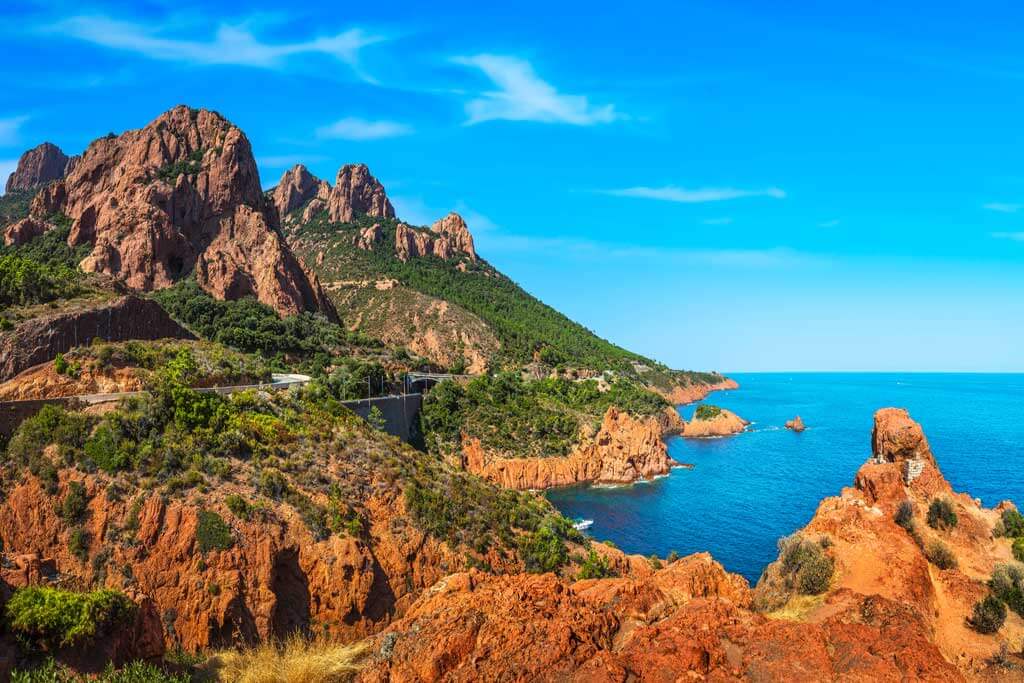
The drive from Saint-Raphaël to Mandelieu-la-Napoule, with the Massif de l’Esterel in the background, is spectacular, and there are many viewpoints to stop for incredible pictures. For your stay in Mandelieu-la-Napoule, book one night at Ermitage de l’Oasis, an Italian palazzo hotel next to the marina and overlooking the sea and the canal. The rooms come with a large bathroom and a small balcony, and the on-site restaurant is excellent – Click here to book your stay at Ermitage de l’Oasis
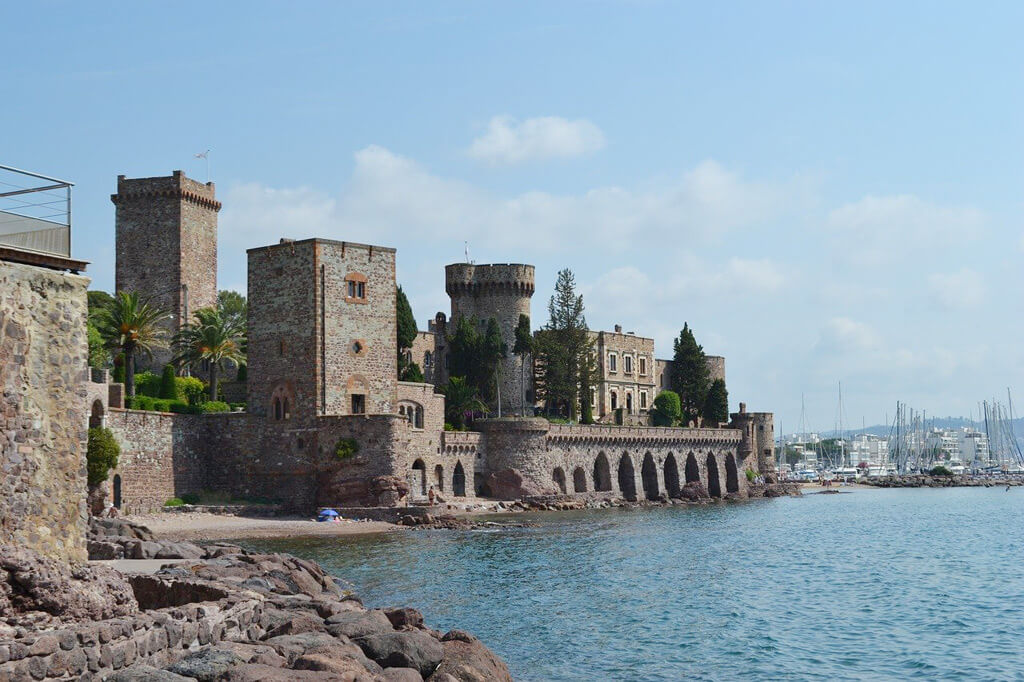
From December to February, the hills of Mandelieu turn yellow with mimosa blooms, and mimosas’ gently aromatic atmosphere bathes the surrounding neighborhoods.
Mandelieu-la-Napoule is considered the Mimosa Capital and is part of the “Golden Triangle“ (the area defined by Mandelieu-La Napoule, Tanneron, and Pégomas), where the “mimosistas” (mimosa farmers) are settled. Their job is related to the exploitation of mimosa (the flower cut-off).
Mandelieu is also known for its Château de La Napoule – one of the most beautiful castles in Southern France –, which occupies a prestigious location on the seafront. Destroyed and rebuilt many times, the castle was restored in the 1920s by American artist Henry Clews and is a fascinating escapade in his original artistic universe.
The list of best things to do in Mandelieu-la-Napoule includes:
- Château de Mandelieu La Napoule
- Hike up to La Colline de San Peyre for great views
- Beaches and sunbathing
- A stroll through the quays of the Siagne River
- Guided walking tour in the Massif de l’Esterel
- Boat tour (with or without a skipper)
Mimosas at Mandelieu-la-Napoule
Don’t miss the traditional Mimosa Festival, which starts around mid-February and lasts one week (this year from 14 to 18 February 2024). One of the top winter festivals in the Côte Azur since 1931, the festival has a parade and many activities based on this delicate flower.
The shop of the Tourist Office (806 Avenue de Cannes) has a good choice of good gourmet food, home decoration, books, and accessories related to mimosas.
Day 5 | Mimosa Hillsides

After the town of Mandelieu-la-Napoule, the route heads inland (roads RD38 and RD94) towards the Tanneron Mountain (Alpes Maritimes). Part of the Golden Triangle, Tanneron has the largest mimosa forest in Europe – a stunning “yellow forest” in wintertime – and is a center for cultivated and wild mimosa species.
The village of Tanneron is worth a stop to stretch your legs as there are many short hikes in the area. Just a short walk from the village, there’s the pretty waterfall Cascade de la Siagne. The 10th-century Chapelle de Saint-Cassien-des-Bois, not far from the lake Saint-Cassien, is another reason to stop at Tanneron.
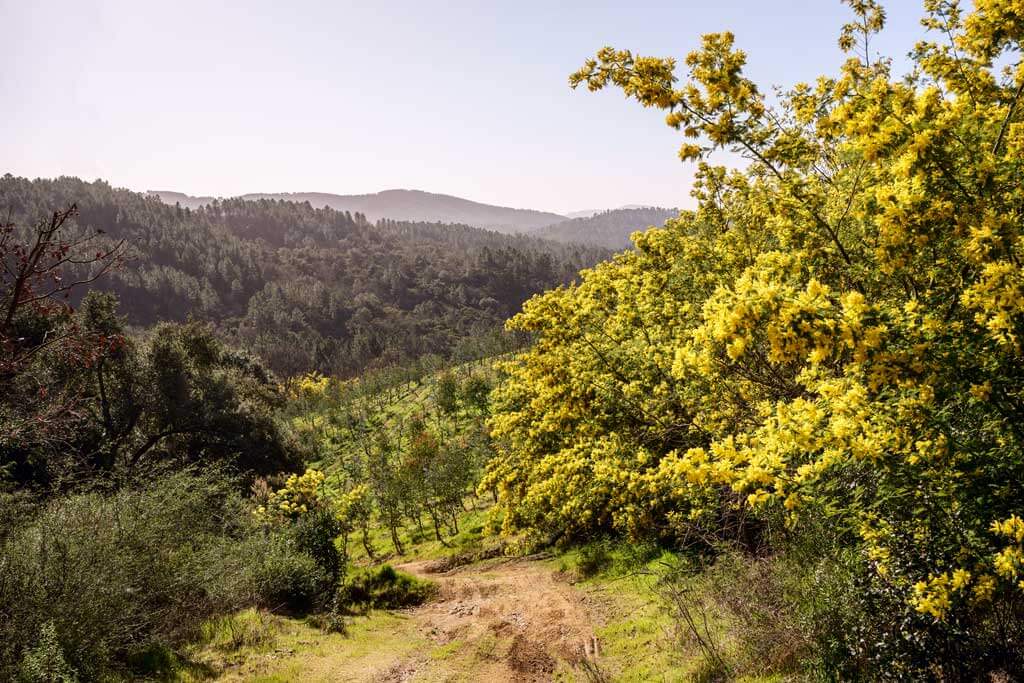
Three kilometers east, following the road, there’s the village of Pégomas. It was built in the 16th century by Italian families, who planted olive trees, vineyards, and fruit trees, and brought their expertise in growing aromatic plants like the mimosa. Don’t miss the baroque Eglise Saint-Pierre, with the “Souls in Purgatory” fresco fragment dating from the 18th century.
Mimosas at Pégomas
Tanneron’s Mimosa Festival takes place this year on 28 January 2024, and it consists of a day full of activities based on mimosas. The festival always starts at the town’s church Notre Dame de Peygros, with a mass and blessing of the mimosa.
Make time to stroll through the Jardin des Mimosas, which includes eleven different varietals.
Visit Le Marché Hebdomadaire, every Thursday morning from 8 am to 1 pm. It offers many food products, flowers included, and products from the mimosa.
Try la mimosette, a brioche specialty from Pégomas, only available during the Mimosa Festival. It is decorated with mimosa seeds and stuffed with a cream that remains the secret of the baker.
From Pégomas, drive the “Route d’Or” to Grasse, where you will spend one night. For your stay in Grasse, book at Mas du Roc, a fabulous villa typical of the French Riviera turned into a Bed & Breakfast with free private parking on site. The rooms are bright and spacious, with a comfortable bed. Some units come with a view of the lush garden or the pool – Click here to book your stay at Mas du Roc Bed & Breakfast
Day 6 | Grasse
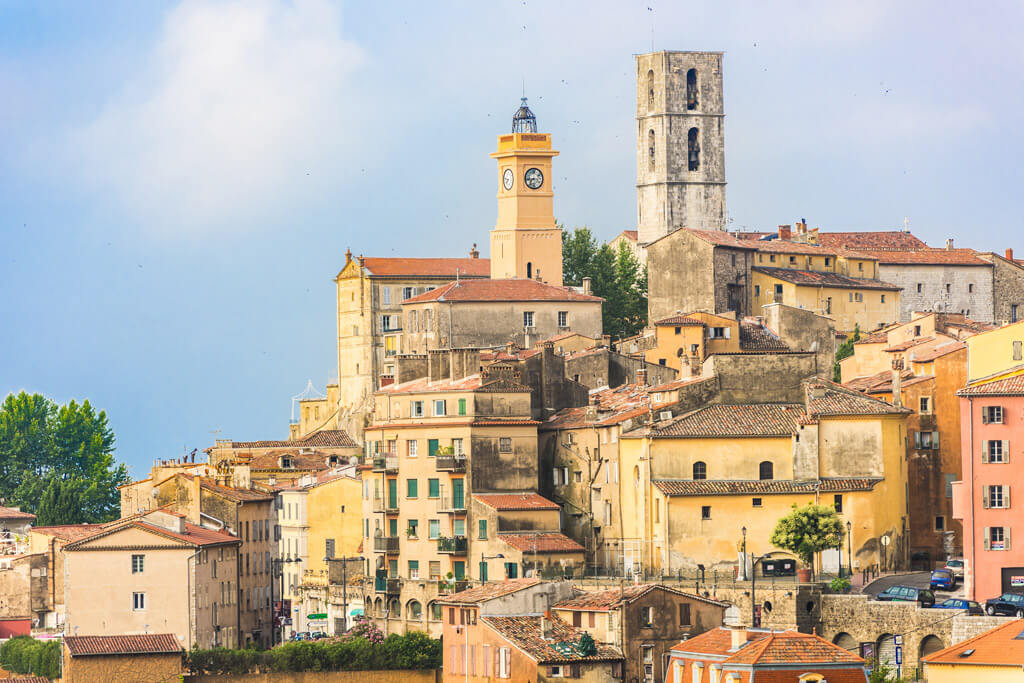
Grasse is the official end of the Route de Mimosa – D559 road and this road trip itinerary. Grasse has been the world capital of perfumery for more than 4,000 years, where the most famous fragrances of luxury brands were born.
Enjoy the town’s charming streets and medieval architecture, with detours to perfume houses such as Molinard, Galimard, or Fragonard. Wednesday is market day in Grasse – Les Matinales du Cours – selling food, flowers, and regional products.
The visit to the Musée International du Parfum (International Museum of Perfumery) is a must of Grasse. Here, you will learn the history of perfume through all its phases, and the part mimosa has played in the success of Grasse’s perfume industry. The museum has a lovely garden with species that provide the precious raw material for perfume making.
Craft your own Perfume in Grasse:



